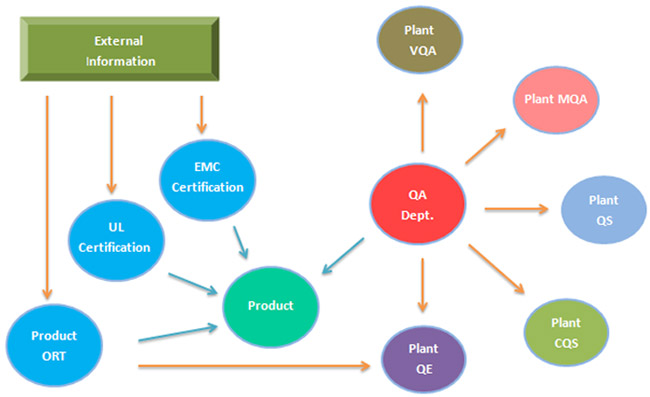Quality Assurance
Good Way Quality Policy: Implement Quality Control, Reduce Defect Rate, Strengthen Business Advantages, and Enhance Competitiveness
Good Way quality management system mainly meets the design and customer standards with various quality processes such as verification to prevention on design quality, incoming quality assurance, process quality control, shipment quality assurance and after-shipment quality service. In the initial design stage, the customer's quality requirements are translated into internal design and recognition standards to reduce and prevent quality risks through reliability test verification. For the quality of incoming material, Good Way ensures the quality of incoming materials through supplier quality performance management and quarterly reviews and audits. For process quality, Good Way performs QC monitoring and 100% electrical testing of each process stage to ensure quality and prevent process quality variation. Good Way improves the quality management system via internal and customer regular and irregular system audits for continuous quality improvement. Moreover, Good Way continues to enhance and advance our quality management through sampling plan, data statistics, KPI and other aspects of analysis and management, collecting customer and market quality feedback information, and holding CIP meetings with relevant departments of production yield to continuously improve and reduce quality risks to meet customer quality demands to achieve customer satisfaction.
Reliability Engineering
From the initial product concept, the product reliability verification is designed and based on the product characteristics and functional requirements with the collaboration with R&D by using the method of failure mode and effect analysis to carry out model design and risk assessment of the potential failure mode of the product to reduce the failure risk of future products. In the product verification stage, through the reliability test plan, various simulation tests such as product functions, user operations, transportation and storage environments that all combine with the failure analysis capabilities of engineering units and design changes are quickly introduced to improve the reliability of product production. Sampling to mass-production products is continuously and regularly carried out in the reliability verification plan to ensure the stability of shipped products. The parameters of the reliability model are continuously correcting through market feedback information and true-cause judgment and filtering, and through statistical model analysis of product survival probability.
Quality assurance is located in Taiwan's R&D headquarters and Kunshan and Taipei factories with different sizes of experimental testing laboratories of reliability to meet the different needs of customers in various regions and to cross support from one to another.



